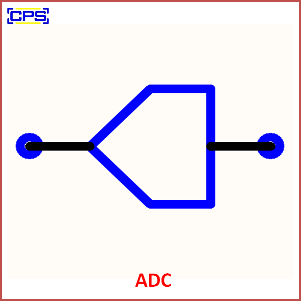ADC (Analog-to-Digital Converter) is an electronic device or circuit that converts an analog signal, which is continuous in time and amplitude, into a digital signal, which is discrete in both time and amplitude.

Key Features of an ADC:
- Input: Continuous analog signal (e.g., voltage or current).
- Output: Digital representation of the analog signal (binary format).
- Resolution: The number of bits used to represent the digital output. Higher resolution provides greater accuracy.
- Sampling Rate: The frequency at which the analog signal is measured and converted into digital form.
- Conversion Process:
- Sampling: Capturing the value of the analog signal at regular intervals.
- Quantization: Approximating the sampled values to the nearest representable digital value.
- Encoding: Representing the quantized values in binary format.
Applications of ADC:
- Audio and video processing (e.g., in microphones and cameras).
- Sensors and instrumentation (e.g., in IoT devices).
- Communication systems.
- Data acquisition systems in scientific and industrial fields.
Examples of ADC types include flash ADC, successive approximation ADC (SAR), and sigma-delta ADC.
